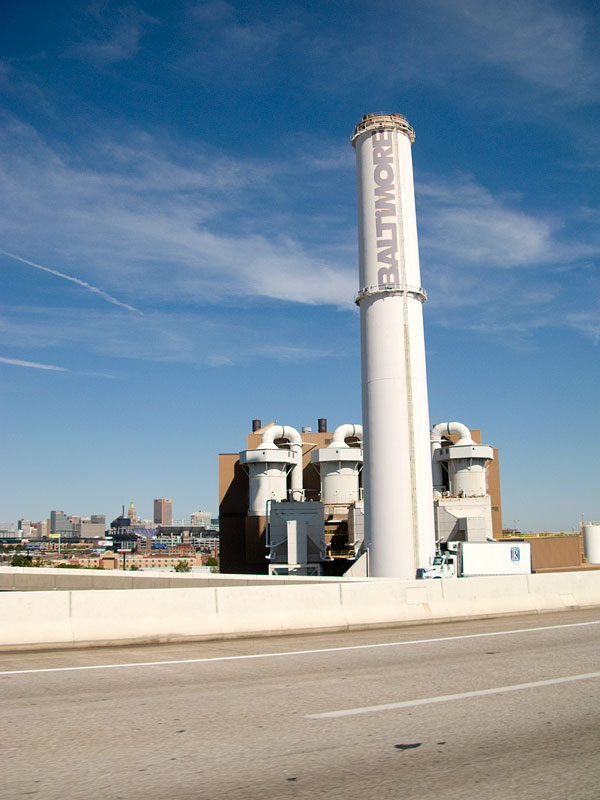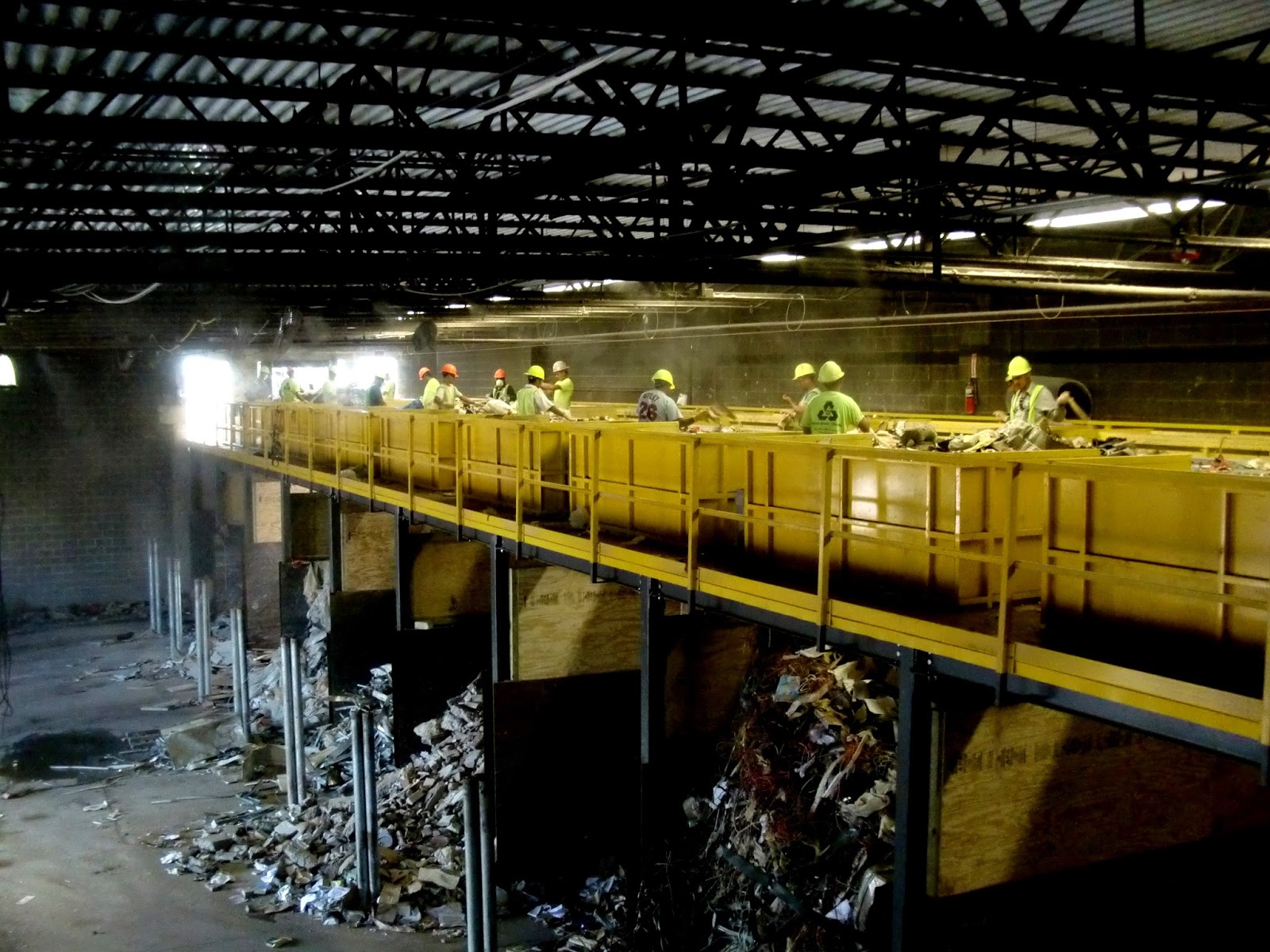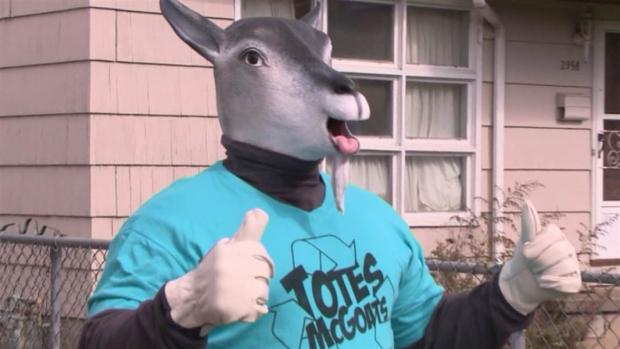A few years ago it looked like Maryland would start to resemble states like Connecticut and Massachusetts that invested heavily in garbage incineration. Baltimore has a downtown incinerator, Harford County wanted to expand theirs, Washington County wanted its own facility, Frederick and Carroll Counties were under contract for building a new 1,500 ton per day plant, a private company wanted to build a 4,000 ton per day plant at Curtis Bay in south Baltimore, and Prince George’s County began exploring ‘conversion technologies’ or as Bradley Angel of GreenAction for Environment and Health calls them, ‘incinerators in disguise.’
Yet today the landscape has changed. Remarkable citizen and small business organizing efforts have defeated the proposals for incinerators in Curtis Bay and in Frederick County. These efforts demonstrate that organized communities can defeat entrenched politicians, industrial companies, and Wall Street banks. Keys to success were the objective analysis of contractual and financial risks, technical details of the health impacts of incineration for residents, the use of social media to by-pass media black outs, formal testimony at public hearings and many, many meetings in homes and community forums. The economics of burning garbage not only stopped the expansion plans for Harford County, but also caused that facility to cease operations in March 2016. Washington County has also abandoned its plans for a garbage incinerator.
Prince George’s County presses on with Residual Plastic Fuel (RFP) and Refuse Derived Fuel (RDF) which is prepared fuel from processed garbage comprised of plastic, paper and dried organics to be used for conversion technologies, including gasification. The defeat of the south Baltimore facility in Curtis Bay closed off an option for Prince George’s County to produce and then send RDF to Baltimore for incineration. Other options remain as RDF can be shipped to existing cement kilns or industrial boilers to be used as fuel. These facilities are smaller than garbage incineration plants, and therefore slide under the EPA regulations for burning garbage, yielding higher levels of air pollution into the surrounding communities.
The existing BRESCO garbage incinerator sitting in downtown Baltimore burns 2,250 tons of garbage each day. It is an aging plant and is among the major polluting facilities in the city threatening public health and the environment. The city benefits from a very low net tip fee of about $50 per ton, possibly the lowest tip fee for any major city in the US. Ash from the facility is disposed at the city’s Quarantine Road Landfill in Hawkins Point on the Fairfield Peninsula. The city’s contract with the plant runs out in 2021. If the city continues to use the old facility it will have to expand the landfill into the community. The Energy Justice Network and Physicians for Social responsibility, among other groups, are working with citizens in the Westport community adjacent to the plant who want BRESCO phased out through economically and environmentally better ways to handle the city’s trash.
BRESCO BACKGROUND
|
In addition to opposing the BRESCO plant, citizens and environmentalists want to close the Montgomery County trash incinerator that has a contract that expires in 2021, and are fighting pro-incineration efforts supported by policies put into place by Maryland’s previous governor, Martin O’Malley. O’Malley signed an Executive Order stopping the siting of any new landfills in Maryland which effectively would require all garbage to be incinerated.
This year’s opposition stopped a bill that would have allowed the Northeast Maryland Solid Waste Disposal Authority (NMWDA), a state agency created in 1980 to promote and site trash incinerators, to expand its role in project decision-making, and to continue its efforts to build more combustion facilities in the state. The proposed legislation would have directly benefited the NMWDA since it is funded from bonding and operating any facility it builds and manages on behalf of its members, including garbage incinerators. And although the bill did not pass this year, citizens and environmentalists expect renewed effort for anti-recycling/pro-burning bills during next year’s legislative session in Annapolis.
Citizens are also opposed to the state’s recently developed so-called Zero Waste Plan, which is not a Zero Waste plan, but instead calls for incineration and is what is known as a ‘Zero Waste to Landfill’ program. But there is no such thing – all incinerators need landfills for the large amounts of ash created from incineration, waste that cannot not fit in the incinerator and for by-pass waste when the incinerator is down for maintenance or repairs; totaling up to 30% of the input to the incinerator. A true Zero Waste Plan would have no incineration and would landfill less waste than an incinerator.
Finally, Maryland citizens and environmentalists are opposed to the state’s classification of garbage incineration as eligible for Tier 1 tax credits under the federal Renewable Portfolio Standard (RPS), thus subsidizing garbage incineration for energy. Maryland is the only state in the country that allows this credit for incineration, which is typically reserved for wind and solar energy facilities.
The battle lines have been drawn for several years. Yet the momentum of the anti-incineration forces has been steady and growing and has proven effective in campaigns that last for years.
In 2014 organized citizens and small business owners in Carroll and Frederick Counties, Maryland completed a nearly 10-year long battle to stop the implementation of a 1,500-ton per day mass burn garbage incinerator facility in their community. The effort brought out the best in local activism: careful analysis of the contract and its financial implications, sophisticated use of media, many small meetings with civic groups, public demonstrations, confronting elected officials and the NMWDA on conflict of interest concerns, as well as failure to understand the contracts before them. And, above all, the citizens persevered in their pursuit of sound recycling and economic alternatives.
After extensive public hearings where the overwhelming number of participants expressed opposition, the plan for the incinerator continued to move forward. Carroll County citizens continued to object, and on their own they formed a working group to focus on the contracts, costs and politics of the plant. They called expert witnesses and explored the state of the art composting, recycling, incineration, transfer stations and landfills. Within 6 months they produced a detailed report that outlined a Zero Waste approach to replace the need for the proposed incinerator. County Commissioners could not ignore the report. The deal was so bad for taxpayers that within six months of the report being issued the Commissioners reversed their decision and decided to quit the partnership with Frederick County. Carroll County set aside $3 million to cover the cost of possible penalties for backing out of the contract. Carroll County eventually had to pay $1 million to exit the incinerator contract.
Frederick citizens and small business people had a tougher row to hoe. After all, the incinerator was the brainchild of Frederick County Commissioners and solid waste management staff. So Frederick County officials, Wheelabrator, Inc., the NMWDA and consultants hung tough. They were being well paid for their efforts with promises of bigger paydays in the future.
Public discussion of the careful dissection of the contract by citizens revealed that billions of public dollars were at stake; a fact could not be swept under the rug. It turns out that citizens were the only ones to actually read and comprehend the substantial and alarming legal and related financial risks of the long-term contract. The county would be committed to the highest possible environmental and financial costs and risks when simpler alternatives were apparent throughout numerous cities and counties across the U.S. No County official knew the content of what they had signed, and the information publicized by citizens was stunning; the contract heavily favored the NMWDA and Wheelabrator, Inc. while the county faced liabilities to be backed by the local taxpayers. However, due to the lack of understanding of the contract by the Frederick County officials and even the NMWDA, there was a chance that Frederick County or Carroll County could avoid the fees for withdrawing from the agreement. The citizens capitalized on the opportunity when Wheelabrator and the NMWDA failed to meet a four-year deadline in getting the project started.
The Goldman Prize for Environmental Leadership that was recently awarded to one of the Curtis Bay anti-incineration fighters has given publicity and enthusiasm for opponents. The economics of burning garbage, the promise of more jobs from recycling and reuse companies locating in the city, and the emerging community support for composting and food production in low-income communities (garden and farm programs) are all drivers working against incineration for Baltimore, and within the entire state.
The rest of the U.S. will benefit from this outcome as several citizens who became involved in the local battles through Zero Waste Carroll County and No Incineration Frederick County are now national experts and are helping other communities face similar challenges.
For the details of the Frederick/Carroll County defeated incinerator see these links:
- YouTube of Carroll County Commissioner Richard Rothschild, “Breaking Up is Hard To Do”.
- $3 million penalty at issue on incinerator project
- Carroll County scraps waste to energy project.
- Frederick County scraps plans for waste-to-energy incinerator
To see ILSR’s stories on this victorious campaign see these links:
https://ilsr.org/destiny-watford-wins-recognition-for-work-fighting-curtis-bay-incinerator/
https://ilsr.org/activists-win-the-day-huge-grassroots-victory-over-curtis-bay-incinerator/
This article was written by Neil Seldman and Caroline Eader. Neil Seldman is co-founder and senior staff member of the Institute for Local Self Reliance’s Waste to Wealth Initiative and has worked in Maryland on solid waste and recycling issues for many years. Caroline Eader is a Frederick County native, founder of Zero Waste Zero Loss and lead analyst of the economic risks of the proposed Frederick-Carroll incinerator that led to its cancellation.





